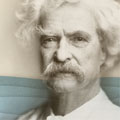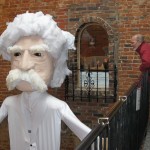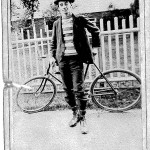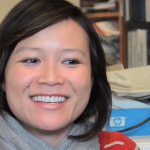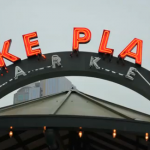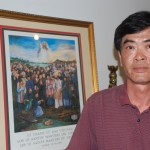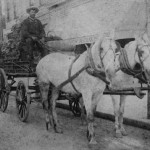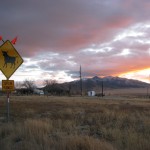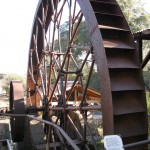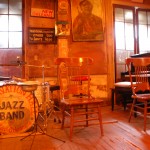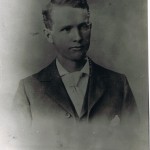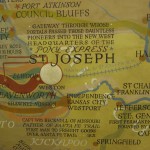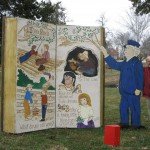Shortly after my Haskin grandparents left Kansas by railroad, Mexican immigrants began arriving in Kansas by railroad to escape poverty and the violence of the Mexican Revolution, 1910-1920. They took unskilled jobs with railroads, mining companies and agribusinesses. Alyssa, Dan and I drive south from Morrill, home in the late nineteenth century to my great-grandparents and grandparents, to Topeka, to interview Andy Valdivia about his paintings on exhibit at the Brown v. Board of Education National Historic Site.
Murals by Valdivia, who shares his Nov. 30 birth date with Mark Twain, are part of an exhibit titled “From Mexico to America: Through the Eyes of Kansas Artists.” One mural captures the story of Mexicans arriving in Topeka, working for the Santa Fe railroad and living in cramped boxcars and bunkhouses, often without indoor bathrooms, electricity or running water.
Mexicans were not encouraged to continue their education. They were not permitted in the public pool or movie theaters—except in the balcony’s “Mexican Heaven,” next to the section for blacks, the “Crow’s Nest.” At restaurants, only takeout was available to Mexicans. A typical sign read “Coloreds, Mexicans and Indians Served in Sacks Only.”
Valdivia’s murals also tell the story of later generations of Mexican-Americans—distinguished military service overseas, graduation from college as well as high school and employment in skilled and professional positions. Valdivia, 63, taught computer programming at Topeka Correctional Facility until he retired on November 30, 2011—an anniversary, of course, of Twain’s birth.
Loren


